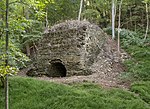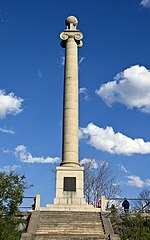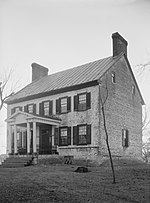Captain William Lucas and Robert Lucas House
Eastern Panhandle Registered Historic Place stubsGeorgian architecture in West VirginiaHouses completed in 1793Houses in Jefferson County, West VirginiaHouses on the National Register of Historic Places in West Virginia ... and 3 more
National Register of Historic Places in Jefferson County, West VirginiaRobert Lucas familyStone houses in West Virginia

The Captain William Lucas and Robert Lucas House, also known as Linden Spring, is a large stone house near Shepherdstown in Jefferson County, West Virginia, United States. It was built circa 1783 for Captain William Lucas, a Revolutionary War soldier. Lucas' son, Robert Lucas was born here and became a Governor of Ohio and the first Territorial governor of Iowa. William Lucas was the son of Edward Lucas II, who arrived in Jefferson County in 1732 and received lands from Thomas Fairfax, 6th Lord Fairfax of Cameron. William's wife was Susannah Barnes, sister-in-law to James Rumsey, whose steamship experiments took place on the nearby Potomac River.
Excerpt from the Wikipedia article Captain William Lucas and Robert Lucas House (License: CC BY-SA 3.0, Authors, Images).Captain William Lucas and Robert Lucas House
Engle Molers Road,
Geographical coordinates (GPS) Address Nearby Places Show on map
Geographical coordinates (GPS)
| Latitude | Longitude |
|---|---|
| N 39.401666666667 ° | E -77.774166666667 ° |
Address
Engle Molers Road
Engle Molers Road
25443
West Virginia, United States
Open on Google Maps







